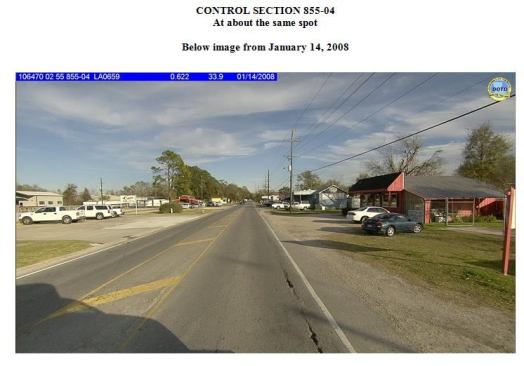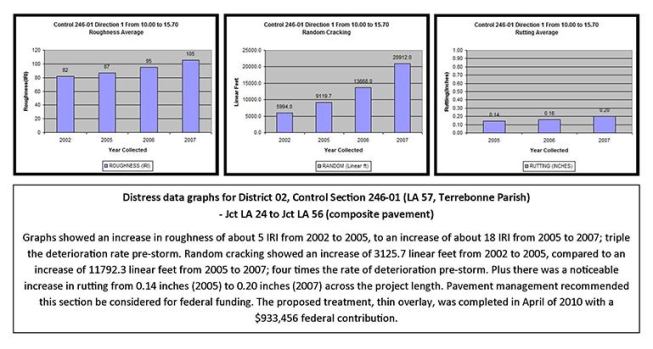LaDOTD
That same section of road three years later. Note asphalt cracki…
Ensuring accuracy
Fugro shares the agency’s commitment to doing whatever it takes to ensure data is consistent and accurate. Detailed procedures, thresholds, and parameters are in place, and the partners apply continual improvement techniques to the QC/QA process. Their work is an example of best practices among North American DOTs.
“Otherwise, you defeat the purpose of data collection,” says Chapman. “We set high expectations and take pride in the quality of our data sets across three cycles. It ensures you’re not dealing with issues after the fact and that no poor decisions are made once data is loaded.
“It also builds trust in the integrity of the intelligence,” he says. “Nobody’s coming back to query the ratings.”
Fugro’s iVision website facilitates information-sharing agencywide. The web-view can overlay color-coded distress for the latest year of collection and graph multiple years of distress data on line or bar graphs. Data can be cross-referenced with corresponding video of defects such as surface cracking.
The agency now wants to develop five-to-10-year budget forecasts based on the data, a goal that illustrates the far-reaching returns possible from having holistic condition data.
Next page: Driving the initiative downward








